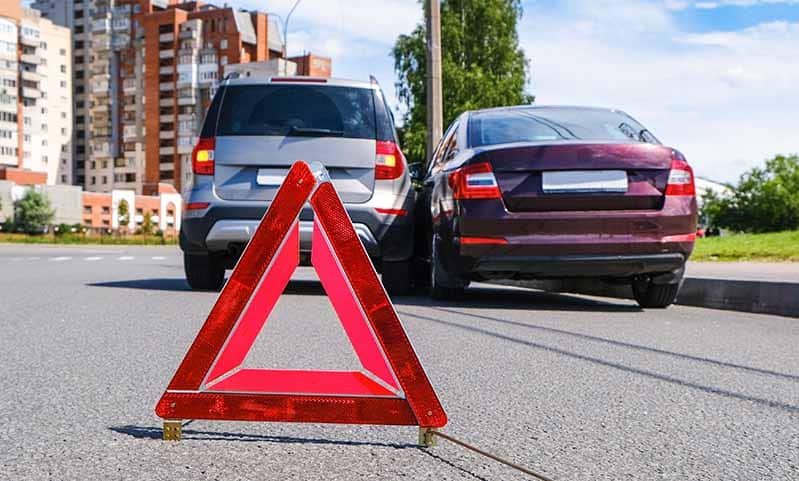The average vehicle collision claim could settle out of court a little over a year after the accident.
During these months, you will hear or read many terms you might not be familiar with. Lawyers do their best to speak English instead of Legalese.
But no one’s perfect!
Regardless of the language we use, our methods and our commitment to you do not change.
We start by diligently collecting evidence which supports your claim. Once we build this foundation, our New York personal injury attorneys work hard to obtain fair compensation for your serious injuries.
This compensation usually includes money for economic losses, such as medical bills, and noneconomic losses, such as pain and suffering.
Tortfeasor
“Tort” is the legal term for a car wreck, assault, or other unintentional or intentional injury. “Feasor”” is the at-fault driver in a car wreck.
Note that there’s often a difference between fault at the scene and liability for damages.
Emergency responders typically only look at the facts. Legal doctrines, such as sudden emergency and last clear chance, often come into play. These theories excuse negligence in some cases.
Ordinary Negligence
Essentially, ordinary negligence is a lack of ordinary care.
Most drivers in the Empire State have a duty of reasonable care. This duty is loosely based on the Golden Rule (do unto others as you would have them do unto you) which children once memorized in school.
Drivers have a duty to avoid accidents when possible, obey the rules of the road, and drive defensively. Not every lapse constitutes negligence.
If Sam was talking to his wife as he drove, Sam was not fully concentrating on the road, which means he was distracted. But most jurors would not say that Sam was negligent in this situation.
Negligence Per Se
Sometimes, the law, rather than the duty of care, establishes the standard of care.
Negligence per se is the violation of a safety law. Tortfeasors could be liable for damages as a matter of law if they violate a safety law, like the speed limit law, and cause a crash.
In some jurisdictions, negligence per se is only a presumption of negligence. The victim must introduce additional evidence to prove liability.
The actual rate of speed might be important in these cases. There’s a big difference between travelling 5mph over the limit and 25mph over the limit.
Liability
Liability is legal responsibility for damages. A New York personal injury attorney usually talks about first party liability and third-party liability.
First party liability involves the at-fault driver. In these cases, liability is a combination of the facts and the law.
Third-party liability, or vicarious liability, usually involves the vehicle’s owner, tortfeasor’s employer, or entity which sold alcohol to the tortfeasor.
Even though these parties were not behind the wheel, they could be financially responsible for damages.
Letter of Protection
The average injury-related medical bill often exceeds $100,000. Most health insurance companies refuse to pay these costs.
Most families do not have the money to pay them.
So, an attorney sends a letter of protection to a medical provider. This letter guarantees [payment when the case is settled or otherwise resolved. So, victims pay nothing upfront for quality medical care.
Demand Letter
Once medical treatment is at least substantially complete, attorneys usually send demand letters to insurance companies.
A quick side note. If Sam is involved in a crash, his insurance company has a duty to represent him in court and pay any damages in the case.
If the insurance company pays a certain sum of money, the victim agrees to drop the case.
This sum usually includes all current and future lost wages, medical bills, property damage, and other economic damages.
To determine a fair amount of noneconomic damages, most lawyers multiply the economic losses by two, three, or four, depending on the facts of the case.
The demanded amount is a starting point for settlement negotiations. After some give and take, some claims eventually settle for a lower sum.
Discovery
During this part of the process, the parties exchange information about their claims and defenses.
Discovery is usually oral, written, and electronic.
Most victims must see a doctor that the insurance company designates. Most victims must also give a deposition, which is basically like testifying in court without a judge or jury.
Mediation
Most New York judges refer contested cases to mediation.
A third-party mediator, who is usually an unaffiliated New York car wreck lawyer, works to facilitate a settlement between the two sides.
If both sides negotiate in good faith, which means they really try to reach an agreement, mediation is usually successful.
Knowing some common car wreck terms makes things much clearer.
For a free consultation with an experienced personal injury attorney in New York, contact Napoli Shkolnik PLLC. We do not charge upfront legal fees and only recover a fee when we win your case.
